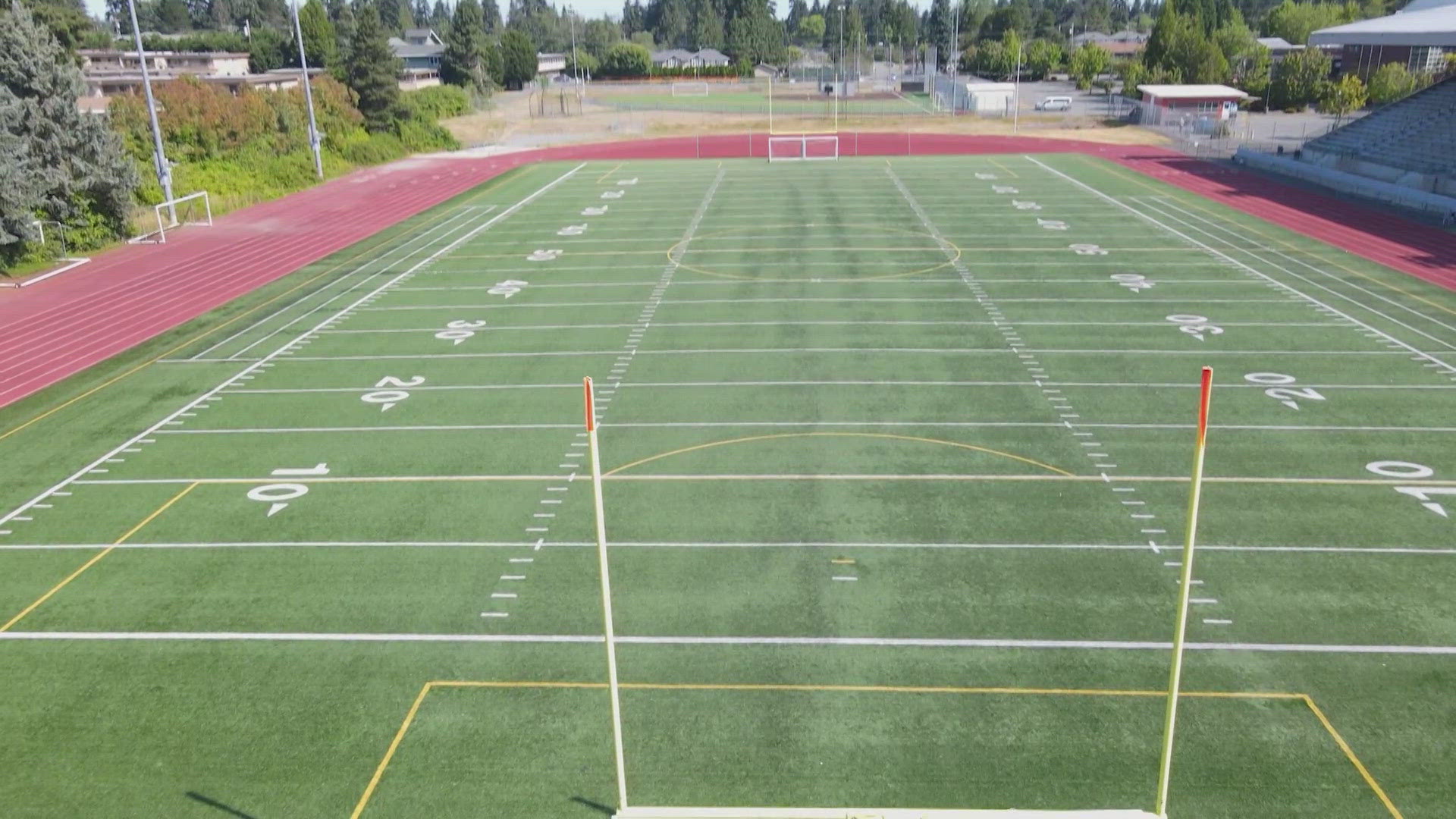PULLMAN, Wash. —
Washington State University (WSU) scientists are on a mission to move away from artificial turf and back to real grass.
WSU Professor Michael Neff is leading the charge.
"The whole goal of this research is to help people use real turf on sports fields instead of artificial turf,” Neff said.
Neff said there are many cons to artificial turf. Turf can run 20 degrees warmer than real grass and still needs water to cool off.
The biggest reason to move away from turf for Neff is the environmental impact it has.
“One of the biggest problems of artificial turf is that it’s not recyclable, it does not decompose in a landfill,” Neff said, adding that to their knowledge, no artificial turf has ever decomposed.
Plus, Neff said, the materials used in artificial turf can be incredibly harmful.
“We thought okay recycled tires, that's a great idea," Neff said. "But it ends up tires now have a compound in there that when it reacts with the ozone, creates a toxic compound that kills salmon. So, if you recycle your artificial turf and the rubber into a landfill and that water runs off into the rivers in Western Washington, then we end up causing a salmon kill."
WSU masters student Faishal Khan said real grass, comparatively, can be beneficial in an environmental context because grass is a carbon suppressor.
“Right now, climate change is happening and things are getting worse so we have to care about it," Kahn said. "And turf grass does play a crucial role in that."
The northwest is the perfect place for this research.
"Ninety percent of all the Kentucky Bluegrass seed is produced in WA, OR and ID and 80% is produced in WA state,” Neff said.
To accomplish this task of replacing artificial turf with real grass, Neff said he knows the right kind of grass needs to be used in the right situation. Neff and his team is studying different types of grass and how they do under various conditions.
They’re planting identical fields in both western Washington in Mount Vernon and eastern Washington in Pullman. Each field has rows of three different types of grass: Kentucky Bluegrass, a mix of Kentucky Bluegrass and Perennial Rye Grass and Tall Fescue Grass.
“Some grasses will do well in Eastern Washington, others will do well in Western Washington,” Neff said.
The scientists have a machine they nicknamed “thumper” that they’ll run over the grass, beating down on it, mimicking athletes running on it. They’ll record exactly how much wear they can put on the grass and also analyze how long it takes to recover between wear and tear, which is a key part of maintaining a field.
“What we’ll do is we’ll apply research grade traffic and wear on the sod, on the turf and we’ll examine how much we can do before it starts to die,” Neff said.
Their goal is for grass customers – from sporting teams and leagues to cities – to be able to consult their research and determine what grass is best for that specific situation because every situation is different. The scientists will use the data they collect to prescribe the best type of grass based on how much rain an area gets, how often the fields will be used, and how long a recovery period is possible between uses.
Neff knows real grass is not realistic in every situation, but he wants to make it easier to use whenever possible.
“What we want to do, under conditions where real grass would do well, to use real grass instead of using artificial turf,” Neff said.

